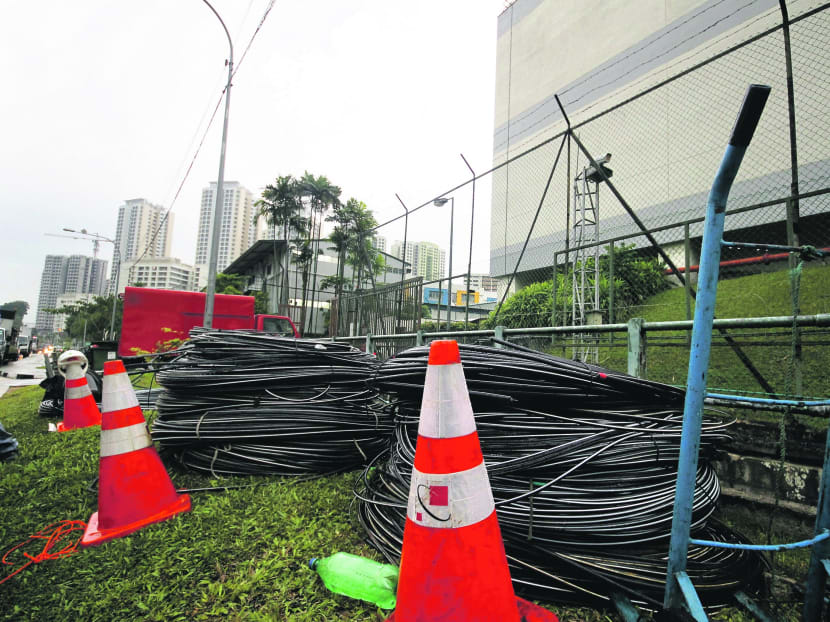Back-up systems available during service disruption: IDA
SINGAPORE — Following concerns over the resilience of Singapore’s network infrastructure that were triggered by the connectivity outage earlier this month, the Infocomm Development Authority (IDA) said yesterday that networks here are sufficiently robust and back-up systems are available in times of disruption.

SingTel’s Bukit Panjang Exchange is seen on Oct 9, 2013, after a fire damaged telecommunication cables inside. Photo: Ernest Chua
SINGAPORE — Following concerns over the resilience of Singapore’s network infrastructure that were triggered by the connectivity outage earlier this month, the Infocomm Development Authority (IDA) said yesterday that networks here are sufficiently robust and back-up systems are available in times of disruption.
Nevertheless, to expect “zero downtime” following an incident would be unrealistic, said the industry regulator.
Rather, the measure of a network’s resilience should be how quickly services are restored following a disruption, it added.
“Having resiliency doesn’t mean no incidents and zero downtime; it’s about risk assessment and mitigation,” said an IDA spokesman yesterday at a media briefing.
He added that it is important to strike a balance between risk management and the cost of building redundancy into the infrastructure.
The blaze at a SingTel Internet exchange building in Bukit Panjang a fortnight ago had damaged 149 fibre cables, which crippled mobile, broadband and pay-TV networks for several days.
Tens of thousands of subscribers, including those of other telcos, were affected by the outage, leading some industry experts to question the resilience of the Republic’s network infrastructure.
The apparent over-reliance on SingTel’s infrastructure — it owns the fibre cables, which it leases to rival service providers — was also something noted by experts and the firm’s competitor StarHub.
But the IDA pointed out that the individual telcos do not entirely rely on Singtel’s infrastructure, as they have their own central offices and data centres.
On the user’s end, there are contingency plans available too, it added.
For instance, businesses can guard against complete disconnection during an outage by purchasing services from their service providers to route connectivity through more than one exchange or path. This means that, if a fire were to strike an Internet exchange building again, a firm’s Internet connection will be routed through another exchange building.
For consumers, there are also alternative platforms during outages. For instance, they can get on the 2G or 4G mobile networks, should the 3G band suffer an outage, the IDA added.
Responding to concerns about over-reliance on SingTel’s infrastructure, the IDA reiterated that telcos have the option of building their own systems. They could also construct some networks and lease the rest from SingTel.
“Most countries’ new fibre networks ride on and optimise existing infrastructure, such as central offices and ducts. If they don’t use resources that are already available, the time to roll out (these networks) would be much longer and costs would be higher,” said the IDA spokesman.
He added that arguments against the own-and-lease infrastructure set-up were related to “concerns of competition”, and noted that there were safeguards against anti-competition.
“Ownership and resiliency are two separate issues. Regardless of who owns the networks, there must be diversity and redundancy built into the networks to enhance resiliency,” said the spokesman.









